Charts of the Week
Current economic trends from 3 to 7 October 2022: trade in goods, bond, number of registered unemployed persons, electricity consumption and other charts
The number of registered unemployed continued to fall in September, as did the number of long-term unemployed. Trade in goods with EU Member States increased in July and August. Uncertainty in the international environment remains high and is having a negative impact on sentiment in export-oriented activities. The rise in inflation in the euro area and the increase in key interest rates are affecting the rise in yields to maturity of euro area government bonds; the spread between the Slovenian and German bond yields in the third quarter was the highest in five years. Electricity consumption in September was again lower than in the same period last year, which we associate with higher electricity prices and the resulting adjustments, especially in energy-intensive companies. In the second half of September, the value of fiscally verified invoices was higher year-on-year in nominal terms in the face of high inflation, and growth strengthened slightly due to last year’s lower base.
Trade in goods – in real terms, August 2022
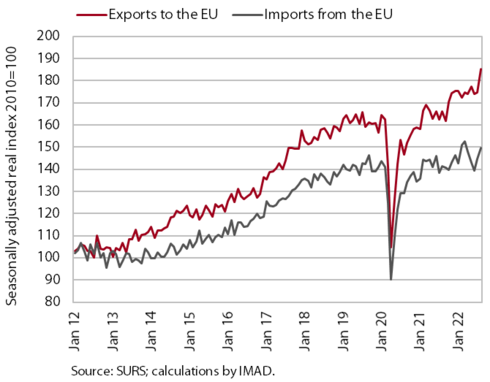
Trade in goods increased in July and August; uncertainty remains high. Real exports and imports of goods to and from EU Member States rose by more than 6.5% in July and August (seasonally adjusted) and were significantly higher than a year ago. Compared to the same period in 2019 (i.e. before the epidemic), exports to EU Member States rose by 10.7% in real terms and imports by 0.4%. Trade with non-EU countries also increased compared to the same period last year, but fluctuates from month to month due to operations involving processing. In recent months, trade in goods with Russia and Ukraine, which was interrupted at the start of the war, has increased again. The high level of uncertainty in the international environment (inflation, supply chain disruptions, energy supply problems, continuation of the war in Ukraine) also had a noticeable impact on the sentiment in export-oriented activities, as export orders and expectations declined further in September.
Bond, Q3 2022
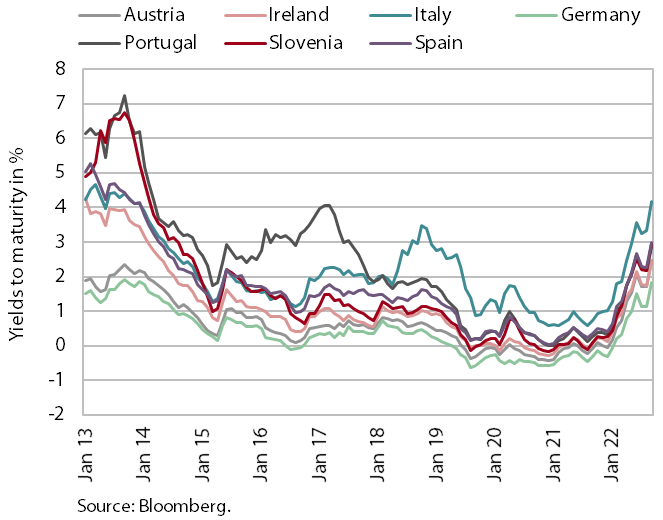
Yields to maturity of euro area government bonds continued to rise in the third quarter. This was driven by a significant increase in inflation in the euro area, the rise in key interest rates and the increased risks of a slowdown in economic activity, as well as measures to mitigate the effects of the energy crisis, which have a negative impact on public finances. The yield to maturity of the Slovenian bond was thus 2.45% in the third quarter. The spread to the German bond was 109 basis points, which is 7 basis points higher than in the previous quarter, the most in 5 years.
Number of registered unemployed persons, September 2022
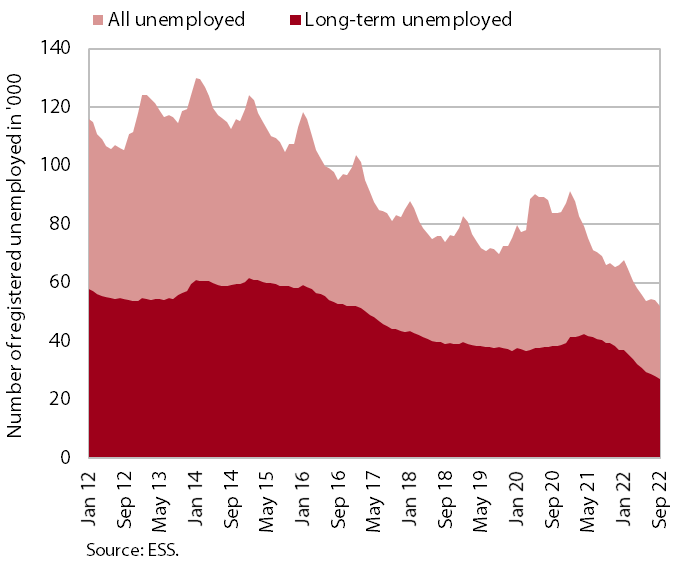
According to seasonally adjusted data, the decline in the number of registered unemployed in September was similar to the previous two months (-1.2%). According to original data, 52,043 people were unemployed at the end of September, which is record low and 3.5% fewer than at the end of August and 21.3% fewer than a year earlier. Under conditions of high demand for labour, which is also reflected in the high vacancy rate, the number of long-term unemployed has also been declining since May last year – their number was almost a third lower year-on-year in September. The number of unemployed people over 50, who, like the long-term unemployed, are harder-to-place, is also declining – in September, their number was a good fifth lower than a year ago.
Electricity consumption, September 2022
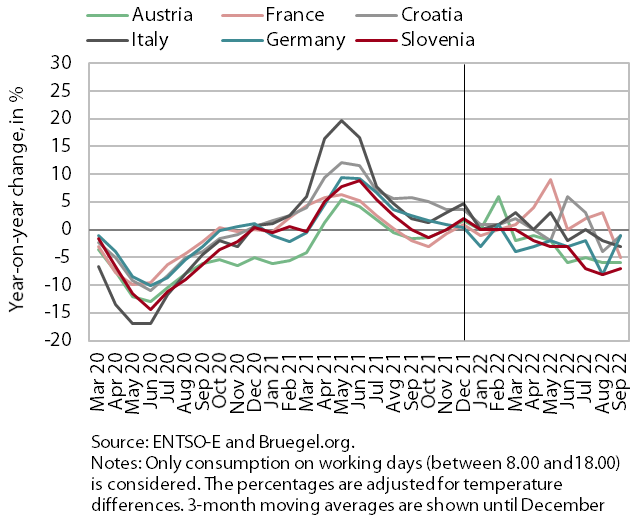
In September, electricity consumption fell by 7% year-on-year, a similar decline to August. In our estimation, the lower consumption than last year is mainly due to the industrial electricity consumption as a result of high electricity prices, due to which some companies, especially in energy-intensive industries, have reduced their production or adapted their production processes to achieve higher energy efficiency. Compared to last September, consumption was also lower in our main trading partners (-6% in Austria, -5% in France, -3% in Italy, and -1% in Croatia and Germany).
Value of fiscally verified invoices – in nominal terms, 18 September–1 October 2022
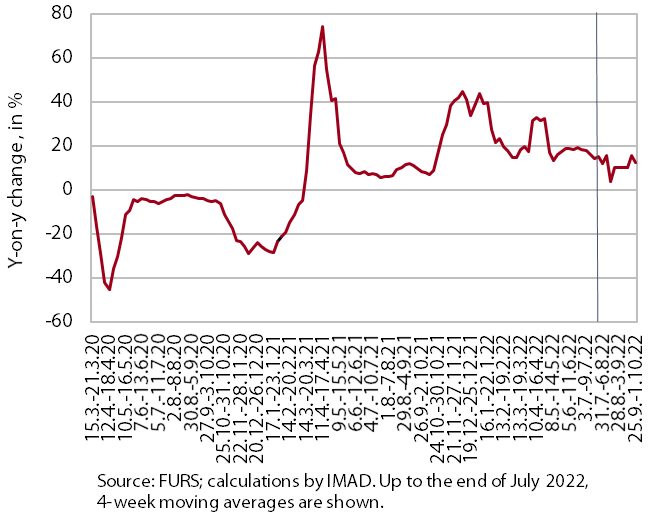
Amid high price growth, the value of fiscally verified invoices between 18 September and 1 October 2022 was 14% higher year-on-year in nominal terms and compared to the same period of 2019. Year-on-year growth was slightly higher than in previous weeks, mainly due to a lower base last year as the recovered/vaccinated/tested rule was expanded to users of most services in mid-September last year. Growth was higher in trade (15%, about 10% in the last month and a half), which accounted for almost 80% of the total value of fiscally verified invoices. Turnover growth in accommodation and food service activities also more than doubled (to 10%), driven by strong growth in food and beverage service activities, while turnover in accommodation establishments again declined year-on-year.
